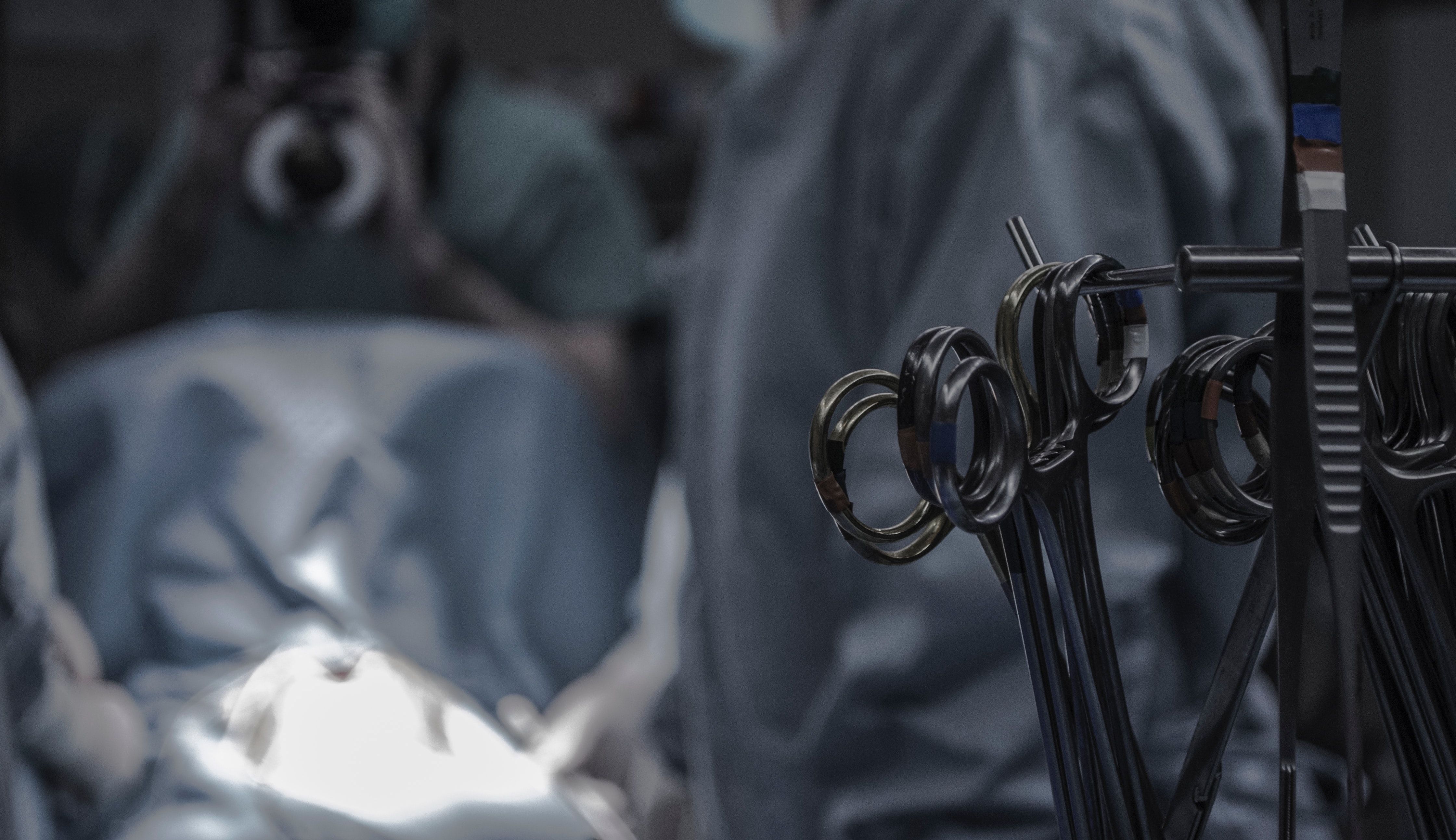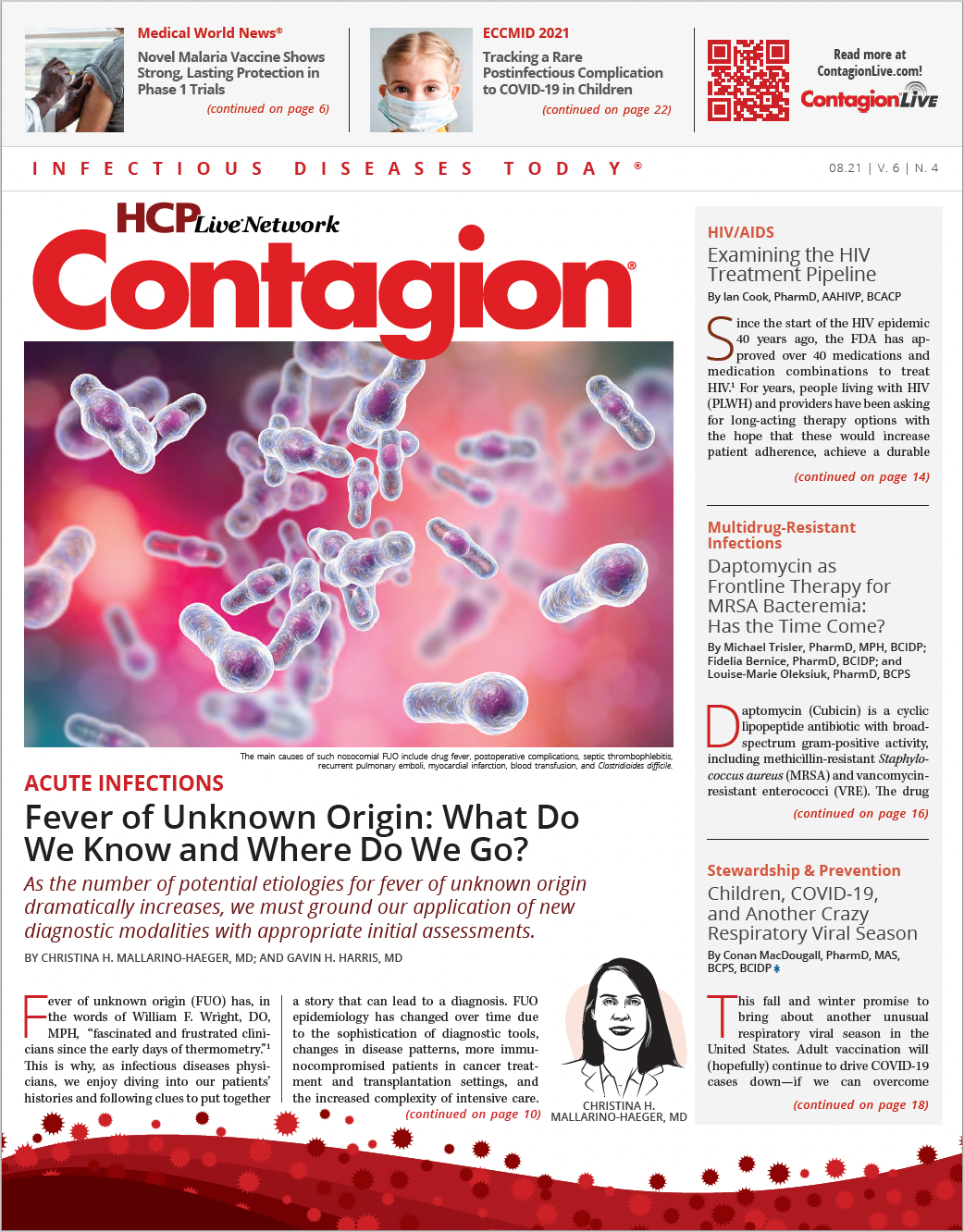Eagerly Awaited Trial on Periprosthetic Joint Infections Reinforces Practice

Highlighted Study: Bernard L, Arvieux C, Brunschweiler B, et al. Antibiotic therapy for 6 or 12 weeks for prosthetic joint infection. New Engl J Med. 2021;384(21):1991-2001. doi:10.1056/nejmoa2020198
The duration of antibiotic therapy for periprosthetic joint infections (PJI) has been a perennial question among infectious diseases experts. Orthopedic surgeons have standardized debridement, antibiotics and implant retention (DAIR), 1-stage exchange arthroplasty, and 2-stage exchange arthroplasty throughout the years. However, there is an evidence gap regarding antimicrobial strategy after surgery. The literature on this topic has been of low quality and primarily retrospective in nature. International and national organizations have published treatment guidelines recommending different treatment durations. (Table)1-4

Bernard et al’s study on the duration of antibiotic therapy for PJI sought to address this knowledge gap. The DATIPO trial (NCT01816009)was an open-label, randomized, controlled, noninferiority trial of patients 18 years or older with PJI. The study was conducted in 28 trial sites across France from November 29, 2011, to January 22, 2015. Investigators randomized 410 patients into 2 treatment groups of 6 weeks vs 12 weeks of antibiotics after surgery. The randomization was based on infected joint (hip vs knee), surgical procedure (DAIR, 1-stage, 2-stage), and episode of infection (first vs subsequent). Outcomes of interest were treatment failure microbiologically confirmed with similar or different bacteria and clinical diagnosis of infection. An adjudication committee, which was blinded to the randomization, assessed these outcomes. Noninferiority was defined as a less than 10% in risk difference using the upper limit of the 95% confidence interval (CI).
The investigators found that 6 weeks of antibiotics was not noninferior to 12 weeks of antibiotics for all patients (18.1% vs 9.4%, respectively). In addition, they found a 10.6% difference between the 2 groups regarding persistent infection within 2 years with per-protocol analysis (95% CI, 3.7-17.5). This difference was driven by the subgroup of patients treated with DAIR, who accounted for 41.3% of the study sample. The failures in this subgroup represented 64% of all failures (n = 34). Among patients with knee PJIs treated with DAIR, failure was 38.2% for 6 weeks and 13.5% for 12 weeks for a risk difference of 24.7% (95% CI, 4.4-43.1). These findings reinforced previous knowledge that prolonged antibiotic treatment is needed for PJI treated with DAIR, particularly knee PJIs.
For 2-stage exchange arthroplasty, there was a 10.1% difference (95% CI, –3.1 to 23.3) which meant that it also did not meet noninferiority. Note that this does not mean that 12 weeks is superior. Interestingly, for patients treated with 1-stage exchange arthroplasty, the difference between 6 and 12 weeks of therapy met the noninferiority criterion (1.2; 95% CI, –4.8 to 7.1). However, since this subgroup was smaller and the events were fewer, it would not have enough power. Nevertheless, this is another area for future research.
The most significant limitation of this study is the heterogeneity of surgical management, as pointed out by the study authors. DAIR and exchange arthroplasties are vastly different surgical procedures. Thus, antimicrobial strategies are also vastly different. It was also unclear whether randomization was performed according to institution. As PJI is a surgical disease, it would be imperative that differences in surgical expertise were taken into account during randomization as this would affect outcomes. There was also an imbalance in the distribution of Staphylococcus aureus complex and coagulase-negative staphylococci between groups. Some evidence exists that infection with S aureus complex is a risk factor for failure of DAIR or exchange arthroplasties, although this was not uniformly seen across all studies.1,2 It is unclear whether the results would be generalizable to gram-negative infections, as these were less well represented. Further, it is worth noting that the study relied on oral antibiotics for most of the treatment course. The median duration of parenteral antibiotics was only 9 days, an uncommon practice in the United States.
DATIPO is an excellent foundation for more randomized, controlled trials. Future trials should focus on a more homogenous group, such as patients managed with DAIR separately from those managed by 1-stage or 2-stage exchange. The current study strongly supports the need for a longer duration of antibiotics for DAIR. What is unknown is the ideal duration past 3 to 6 months after debridement. Dedicated studies for the exchange arthroplasties are also needed to settle the adequate duration of antibiotics after resection. In practice, the duration of therapy is nuanced and influenced by nonsurgical factors such as pathogen, history of treatment failures, and feasibility of future surgical interventions. Although this trial had a good representation of various patient presentations, we should still note individual variations seen in the clinics. At present, practices that follow the Infectious Diseases Society of America clinical practice guidelines on PJI treatment duration are reinforced by the findings of this study.
Don Bambino Geno Tai, MD, is an instructor of medicine and an infectious diseases fellow at Mayo Clinic in Rochester, Minnesota.
Christina G. Rivera, PharmD, is an assistant professor of pharmacy and an infectious diseases pharmacist at Mayo Clinic in Rochester, Minnesota.
Omar M. Abu Saleh, MBBS, is an assistant professor of medicine and a senior associate consultant at the Division of Infectious Diseases at Mayo Clinic in Rochester, Minnesota.
References
- Osmon D, Berbari E, Berendt A, et al; Infectious Diseases Society of America. Diagnosis and management of prosthetic joint infection: clinical practice guidelines by the Infectious Diseases Society of America. Clin Infect Dis. 2013;56(1):e1-e25. doi:10.1093/cid/cis803
- Argenson JN, Arndt M, Babis G, et al. Hip and Knee Section, Treatment, Debridement and Retention of Implant: Proceedings of International Consensus on Orthopedic Infections. J Arthroplasty. 2019;34(2S):S399-S419. doi:10.1016/j.arth.2018.09.025
- Anemüller R, Belden K, Brause B, et al. Hip and Knee Section, Treatment, Antimicrobials: Proceedings of International Consensus on Orthopedic Infections. J Arthroplasty. 2019;34(2S):S463-S475. doi:10.1016/j.arth.2018.09.032
- de Beaubien B, Belden K, Bell K, et al. Hip and Knee Section, Treatment, Antimicrobials: Proceedings of International Consensus on Orthopedic Infections. J Arthroplasty. 2019;34(2S):S477-S482. doi:10.1016/j.arth.2018.09.033
- Fagotti L, Tatka J, Salles MJC, Queiroz MC. Risk factors and treatment options for failure of a two-stage exchange. Curr Rev Musculoskelet Med. 2018;11(3):420-427. doi:10.1007/s12178-018-9504-1

